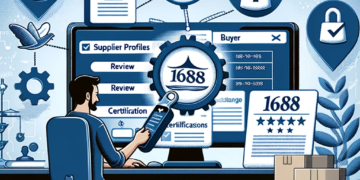As technology continues to evolve at lightning speed, businesses are frequently upgrading their IT equipment to stay competitive. But what happens to the hardware you no longer use? Rather than letting it collect dust or sending it straight to the recycling bin, there’s a smarter, more sustainable option: IT Asset Recovery. This process not only helps you extract value from retired IT assets—it also supports environmental responsibility and data security. So, what exactly is IT asset recovery, and why should your business care?
Understanding IT Asset Recovery
IT Asset Recovery refers to the strategic process of retrieving, evaluating, and repurposing end-of-life IT equipment in a way that maximizes financial return and reduces environmental impact. It’s a core component of the broader IT Asset Disposition (ITAD) framework, focusing specifically on reclaiming value from decommissioned assets.
Common devices involved in recovery include:
- Laptops and desktops
- Servers and networking equipment
- Storage devices
- Mobile phones and tablets
- Monitors and peripherals
Through professional asset recovery services, businesses can ensure that reusable equipment is either redeployed internally or resold in secondary markets—often generating a surprising return on investment.
Why IT Asset Recovery Matters
The benefits of IT asset recovery extend far beyond just clearing out old hardware. Here’s why it should be a priority for your organization:
1. Cost Savings and ROI
Recovering IT assets can significantly lower the total cost of ownership (TCO) of technology. By reselling or repurposing devices, companies can recoup part of their initial investment—money that can be reinvested in new technology or infrastructure.
2. Environmental Impact
Discarded electronics contribute to the global e-waste crisis, which poses serious environmental and health risks. IT asset recovery supports a circular economy by extending the lifecycle of devices and minimizing unnecessary waste. This helps businesses meet sustainability goals and comply with environmental regulations.
3. Data Security and Compliance
Data security doesn’t end when a device is powered off. Improper disposal of IT assets can lead to data breaches and non-compliance with regulations like GDPR, HIPAA, or ISO standards. A professional recovery process includes certified data wiping or destruction, ensuring full compliance and peace of mind.
4. Operational Efficiency
Storing unused equipment takes up valuable space and can lead to inventory confusion or security risks. A structured asset recovery process streamlines operations, freeing up space and improving asset management.
How the Process Works
The IT asset recovery process typically includes the following steps:
- Inventory and Collection: Devices are identified, cataloged, and collected from business locations.
- Data Sanitization: All data is securely erased or destroyed according to international standards.
- Testing and Grading: Equipment is assessed for functionality and condition.
- Refurbishment or Resale: Viable equipment is refurbished for reuse or sold in secondary markets.
- Reporting and Documentation: Certificates of data destruction and detailed audit trails are provided.
A trusted partner ensures every step is handled with care, transparency, and full compliance.
Choosing the Right IT Asset Recovery Partner
Partnering with an experienced service provider is crucial to achieving the full benefits of asset recovery. Look for providers that offer:
- Certified data destruction methods
- Transparent tracking and reporting
- Global logistics and secure handling
- Expertise in refurbishing and remarketing
- Commitment to environmental and ethical standards
One example is the IT Asset Recovery services offered by Circular IT group. Their approach ensures not only data security and value recovery, but also supports your organization’s sustainability and IT lifecycle goals.
Final Thoughts: Recover More Than Just Hardware
IT Asset Recovery is no longer a “nice-to-have” but a strategic necessity in modern business operations. It provides real value in the form of cost recovery, risk reduction, and environmental responsibility. Whether you’re upgrading hardware or consolidating your IT infrastructure, incorporating a recovery plan should be part of your long-term technology strategy.
Make smarter decisions with your retired technology—and let it work for you one last time.
David Prior
David Prior is the editor of Today News, responsible for the overall editorial strategy. He is an NCTJ-qualified journalist with over 20 years’ experience, and is also editor of the award-winning hyperlocal news title Altrincham Today. His LinkedIn profile is here.











































































